
https://www.youtube.com/watch?v=HSIHNqA1Nbw&t=40s
Olympia High School - Chemistry Class
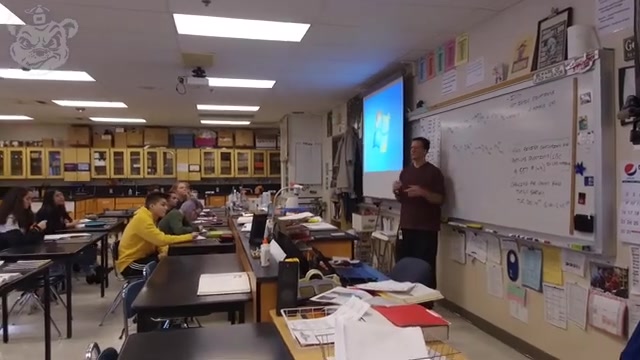
Right .
And is terminology is tricky here , which is why we want to practice with it .
So those of you said that magnesium is being oxidized , right ?
That two plus charge that is correct .
OK .
So magnesium being oxidized and the silver , in this case is being reduced or reduced to its elemental form .
That's where that term terminology came from .
OK .
Reduction in charge , the elemental form .
So um anytime we have something to oxidize on , we're also gonna have to Yeah .
So I don't , I just don't understand why you like most important in talking with that .
Well , when you start looking at the actual energy that's associated with our magnesium um in as a metal going to a magnesium ion because we're actually gonna get like an electrical charge that comes from that from those two electrons that are being donated to our cell .
So we're actually able to like stick electrodes in the line um to see how much electrode .
Yeah .
And so we wanna be able to separate it out .
All right .
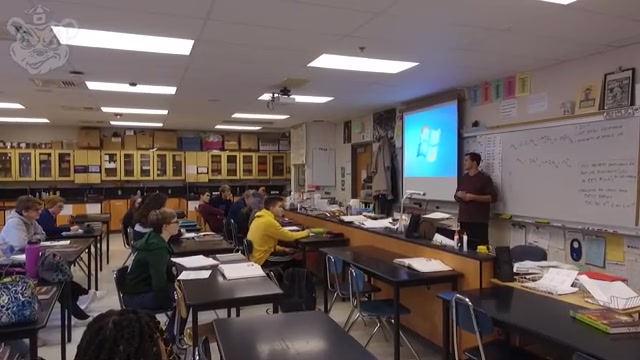
All right .
Well , this might be exactly what she just asked .
I actually not so sure , but I still don't get um like why the , the OK .
Um why we call it like a spectator ion um because it just stays aous .
So all we see happening is the , the passing of electrons from our , from the um magnesium to the silver change stage , right ?
Or if it doesn't actually become part of the economy .
So in this case , we have , you know , the , the precipitate , we call the silver precipitate all of that .
Yeah , the magnesium that would be dissolved .
So , uh yes .
Well , if it was , if it wasn't part of that chemical reaction , so it could stay solid and so react it also .
Um but if it was aqueous , it would not be a , if it was salt , it could be but possibly not .
So we need to see what the actual rash .
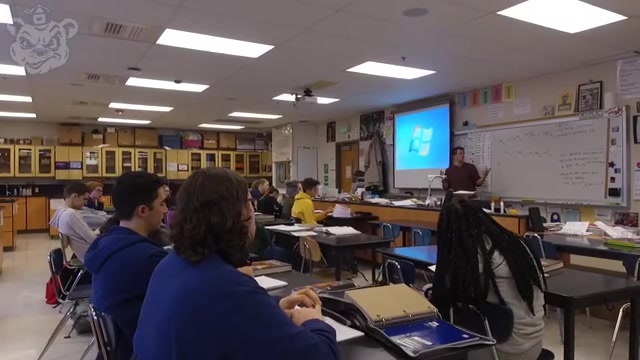
That's what you guys are gonna look at right now .
Um Is actually what this reaction I'm gonna use silver .
Um We're gonna use six different levels and actually see what that single person look like .
Ok .
Uh Yeah .
Um why are the electron changing ?
Is it because of the equation ?
That is a great question .
Anytime you see a reaction spontaneity happening , it's because those products are lower in energy or it's more stable .
Um So it's more stable for magnesium to be oxidized than it is for the silver .
And so all of this relates directly to what we're talking about on Friday .
Um is which of these two metals has been around longer silver we read about silver in antiquity .
It's been around for a long time as pre develop .
Whereas magnesium , we never read about it in history was OK because it wasn't really actually isolated until a couple of years ago .

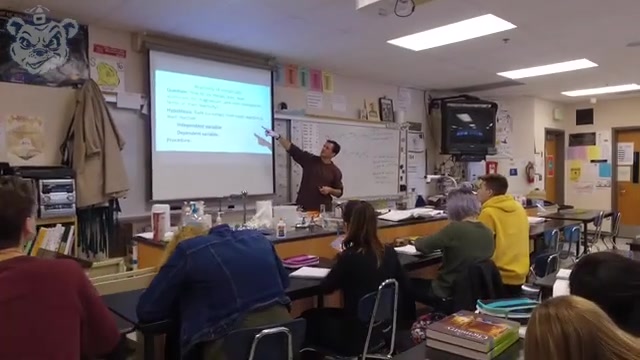
So here's our question and it's a question that um that actually just asked basically is how , how do we know or why does this happen ?
Why would that magnesium replace that silver ?
And because of the instability , seeking a more stable lower energy state and that's why things have been reacting .
So our question here is how do these six metals when you zinc lead , aluminum , tin , magnesium and iron um compare in terms of their reactivity , they're reacting with other salts that are around .
And what I want to do for a hypothesis here is don't put it in if then because like you normally would um where you're saying you're independent , variable , independent , variable and what you think is gonna happen , the relationship between those I just want you to rank them .
So based on what we talked about , um it was back on a Friday with regard to , you know , how long metals have been around based on your experience with boats , uh the copper cycle labs and we did other labs .
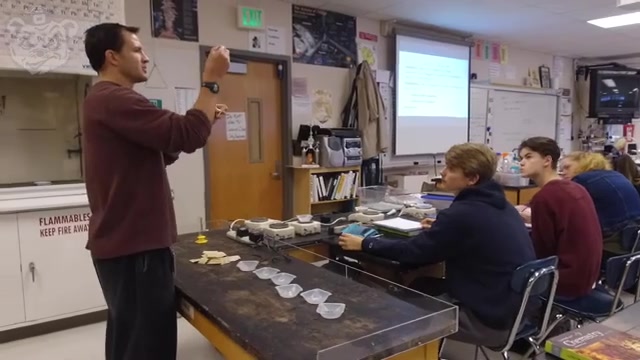
Once you go from the most reactive , it's reactive .
No .
And then after we talk about the procedures and you know what you're doing , uh and you can write any of what you think is the independent .
So for each of the metal samples , you see one of these pieces of it and you want to make sure that there isn't an oxide layer on here .
So there's also pieces of sandpaper .
But you can try doing if you can sand the whole thing or if you wanna try sanding just like half of it to see how the oxide layer reacts um versus the standard part of it .
So even if it doesn't look like there's anything on there , you just see at the end of it of each of these , then you're gonna put that into test tube .
And what I recommend doing is taking these either two at a time or having each person from your lab group come over .
So you don't get it confused because they all look fairly silvery , like silvery metals .
So you know what they are and then you can arrange them .

Uh So you know what they , where these up here are range based on atomic numbers .
We do it alphabetically .
Uh If you want a label on a sheet of paper , uh which one is in which test tube or a mass , it was actually able to work .
And then you're gonna put your metal on the bottom of each of your test tubes .
And then uh you're gonna put about 4 to 5 mL of copper , two sulfate , just cover it up .
It's just enough to cover up the metal sample .
So you shouldn't see it reacting .
And then for each of those is you put the cuff sulfate in , observe it for , you know , a minute or two on its own .
Um And how , how fast it starts reacting .
What do you see happening ?
You see vol coming up , you see color change , you can feel the temperature change .
Um so some evidence of chemical change and then um after you let that react for about 1 to 2 minutes , then you can move on to the next one .
And then after you got them all there after that , about 10 to 15 minutes and kind of make your about all over .

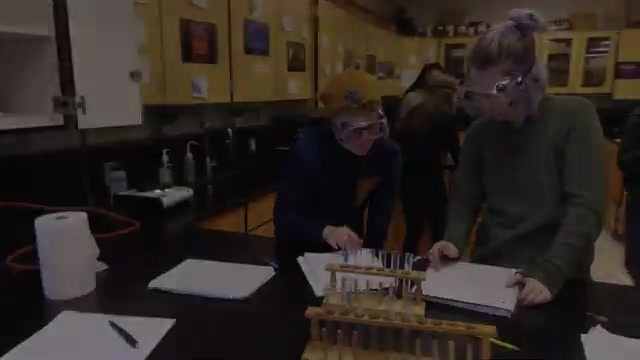
Actually , I said a little bit of them is not just about 25 mL , you 25 .
I got it and then we divide it up there .
So we need 4 to 5 mL in each so we can do this one first .
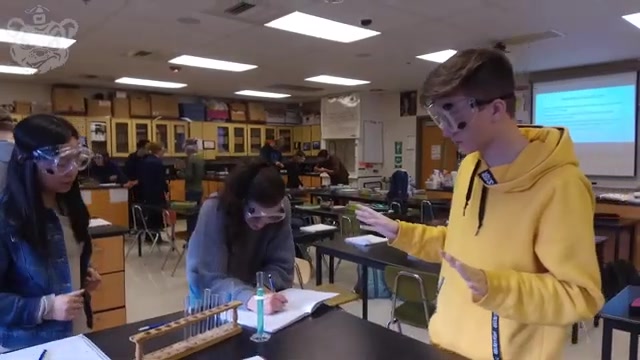
So this is we gotta be careful though that this is a little over 25 .
That's a lot of pressure .
Tell me for I know .
But what is this ?
What do you think ?
I mean it's about 45 just so its OK .
Wait covers it fully .
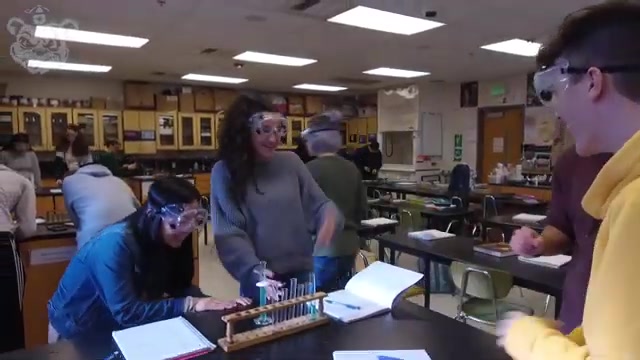
I felt too much .
Yeah .
II I got it .
Got it .
Stop .
I like a lot .
Thank you .


It's getting a little buzz .
It's so hard .
No , you know what it was at the bottom , Amanda , you do this one show that you can do it .
So we do each one first travel .
Ok .
I'll make sure .
All right .
What do they say that ?
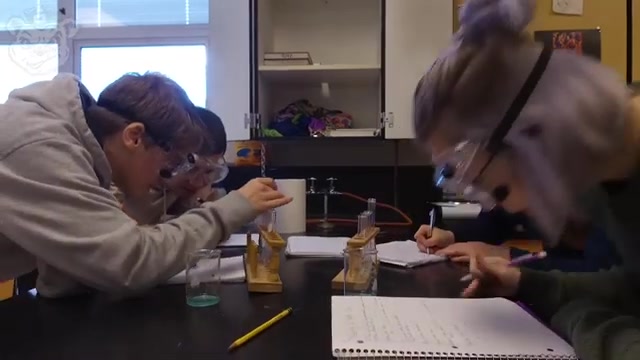
I don't even see it .
Definitely .
No , no float .
So it looks like it's turning around the edges .
Oh , this thing turned black .
Yeah , that kind of black .
It's like the stuff on a big , that's not my .
0000 , never mind .
Yeah .
Nice .
You have a , the one where they both them ?
Ok , down there .

So , this is this , isn't it ?
So we can make the informations and then my mother got ready for now I left that .
There's nothing in the way still .
What is this first ?
There we go .
You .
No , that I feel like , yeah , I know .

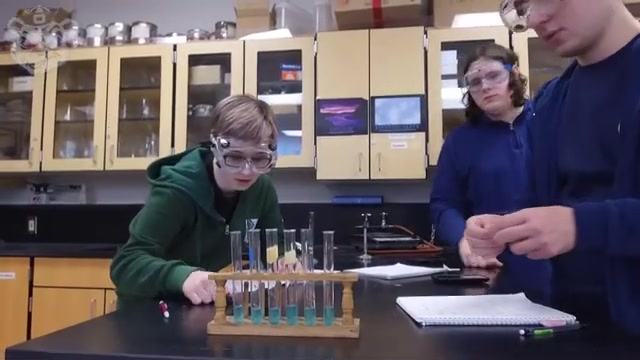
And they had at home was that one ?
That one was 10 , right ?
Yeah , that's right .
And we all drop again .
Bona are you sure ?
It's Yeah .
Ok .
Back to my will bubbles on it but we don't report immediately .
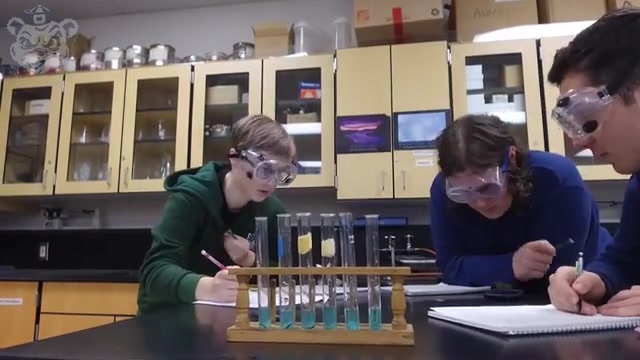
We wait for , we have it for the first two minutes at the very end .
Ok .
Is it turning color ?
I can't really see .
Can you tell what color ?
Oh , it's dissolving it .
It's more black than like that .
They're all pretty much the same color .
So it's more one Z A .
Ok .
So definitely Magnesium first .
I think we can do our own rankings .
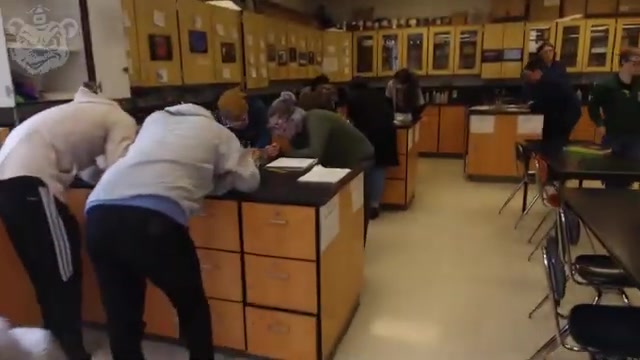
We do our own um I , I , so I tell you what time you want to make your attend event ?
Anything that did I say ?
I say your leg was the muscle and I couldn't respond back .
So my , I did that wait .
Ok .
So these mothers are you get to fix the ?
You shoot me ?
Yeah , he did to .


Where do I put the metal ?
No one ?
It's got yellow stuff in there .
The , there are bubbles at the bottom of it .
Yeah , there are like big bubbles too .
Hi , this one's very reactive still .
So , I think magnesium is definitely the most .
Oh , for sure .
Magnesium .
And then , I don't know .
I kind of want to say , which is the fourth one I think .
Are you looking for a way to reach a wider audience and get more views on your videos?
Our innovative video to text transcribing service can help you do just that.
We provide accurate transcriptions of your videos along with visual content that will help you attract new viewers and keep them engaged. Plus, our data analytics and ad campaign tools can help you monetize your content and maximize your revenue.
Let's partner up and take your video content to the next level!
Contact us today to learn more.